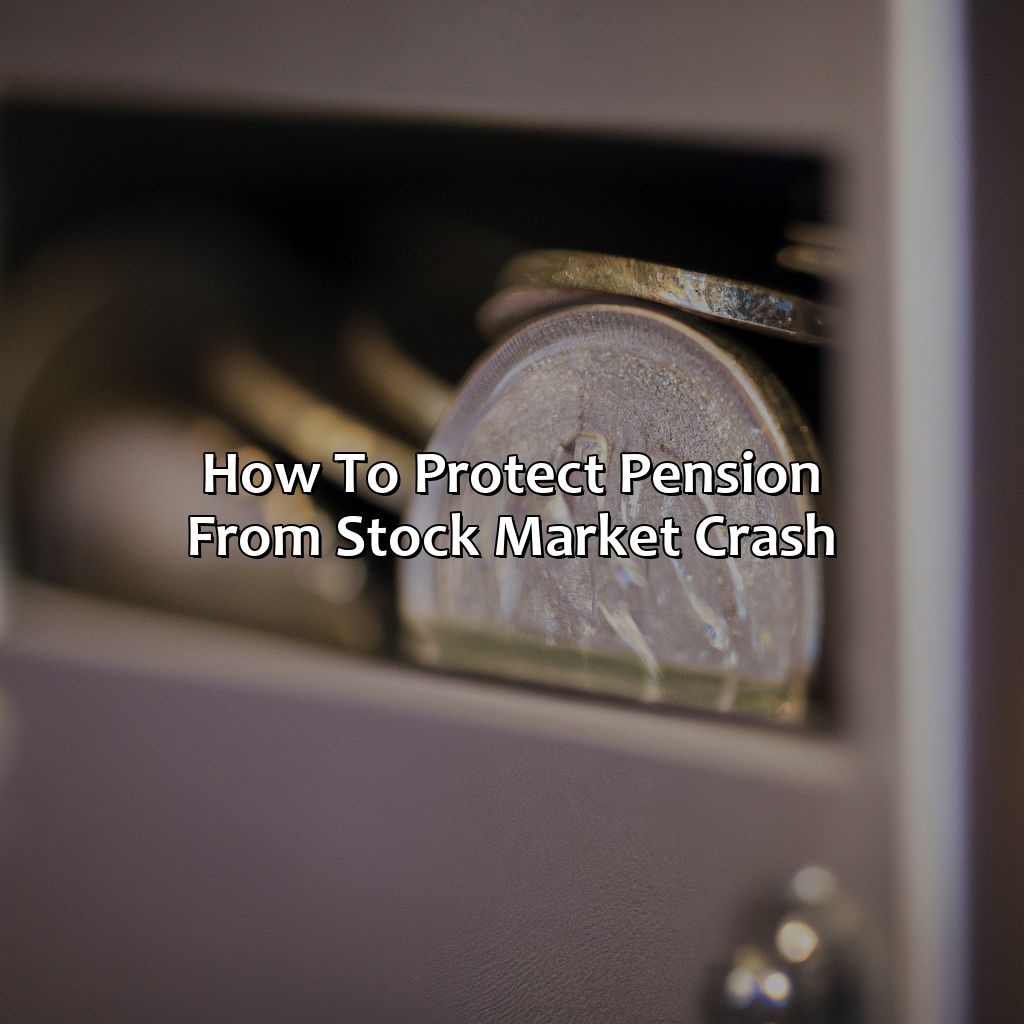How To Protect Pension From Stock Market Crash?
Key Takeaways:
- Protecting your pension from a stock market crash is important to ensure financial security in retirement.
- Diversifying your investments by allocating assets based on risk tolerance and investing in non-correlated assets can help reduce the impact of a market crash.
- Hedging strategies such as using put options and short selling can also mitigate the impact of a crash.
- Conservative investment strategies such as choosing low-risk securities and investing in fixed income products can provide stability and predictability in a volatile market.
- Regularly monitoring your investments is crucial to ensure they continue to align with your retirement goals and risk tolerance.
Feeling worried about your pension in these tumultuous times? You’re not alone! In this article, we’ll explore ways to protect your pension from a stock market crash. Read on for practical advice to keep your retirement fund safe.
Importance of protecting pension from stock market crash
Pension Planning: Shielding Your Retirement Fund from Stock Market Turbulence
One of the critical aspects of securing a secure and comfortable retirement is safeguarding pension funds against unexpected market shocks. Protecting pensions from stock market crashes is imperative in the current volatile economic climate. As market returns are often unstable and subject to fluctuations, mature investors should diversify their portfolios to insulate themselves from market risks.
Regardless, pensions are long-term investments, and it is crucial not to let market swings in the short term trigger panic. Instead, it is prudent to take a longer-term view of the market and focus on building a diversified portfolio that can weather financial storms. Investing in less correlated assets, such as real estate investment trusts, commodities, or bonds, can provide additional protection against market shocks.
Furthermore, retirement planning should not stop at investing in a well-diversified portfolio. It is equally crucial to consider other factors that may affect pension investments, such as inflation, taxes, and healthcare costs. Making timely adjustments and being mindful of these variables can help to protect pension funds against inflation and market volatility.
In this context, a prudent example is the case of a pension holder who invested in a diversified portfolio that included bonds, stocks, and rental properties. Despite the 2008 financial crisis, the pension holder did not panic and instead relied on the well-diversified portfolio that weathered the storm. By diversifying the assets, the pension holder was able to protect the pension fund against market fluctuations and achieve long-term financial stability.
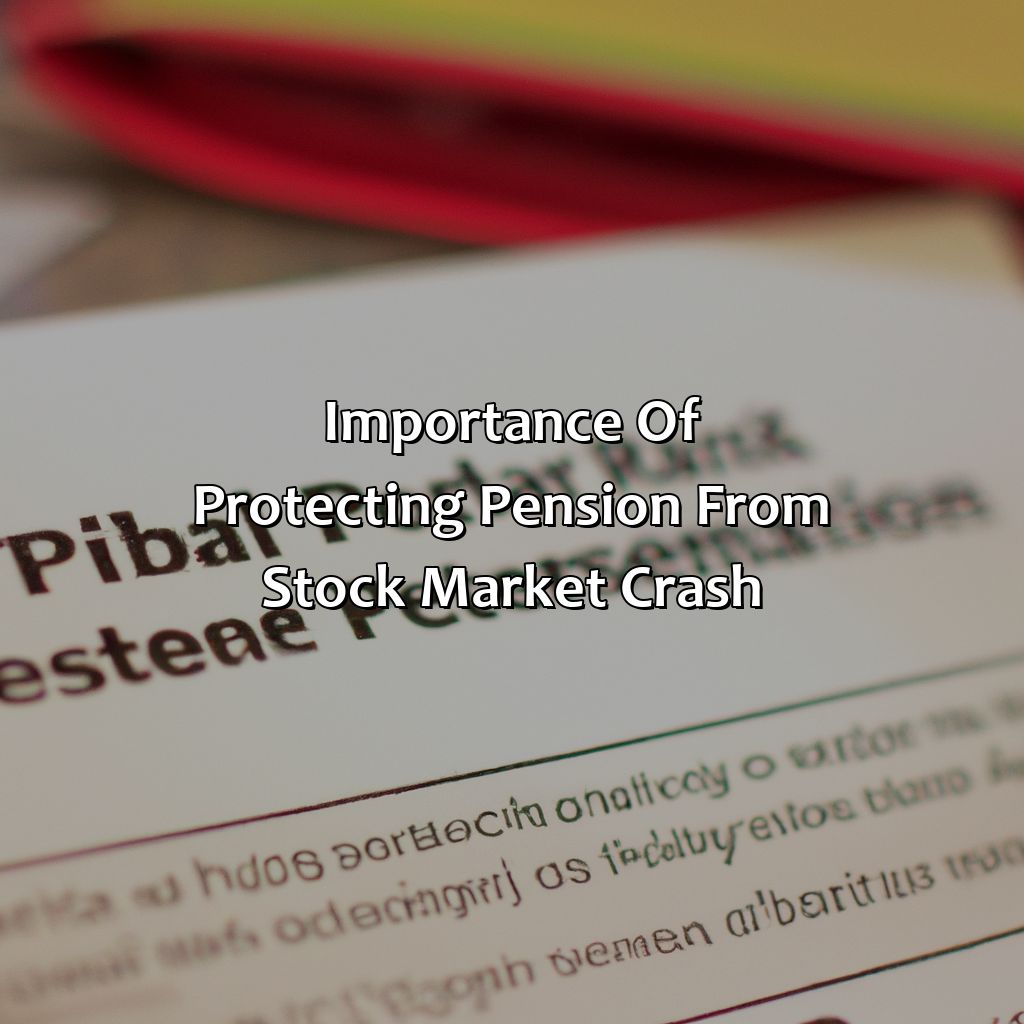
Image credits: retiregenz.com by Yuval Duncun
Diversifying Investments
To protect your pension from a stock market crash, diversify your investments. Look at your risk tolerance and invest in non-correlated assets. Our article “How To Protect Pension From Stock Market Crash?” has sections with solutions. These sections can help safeguard your future.
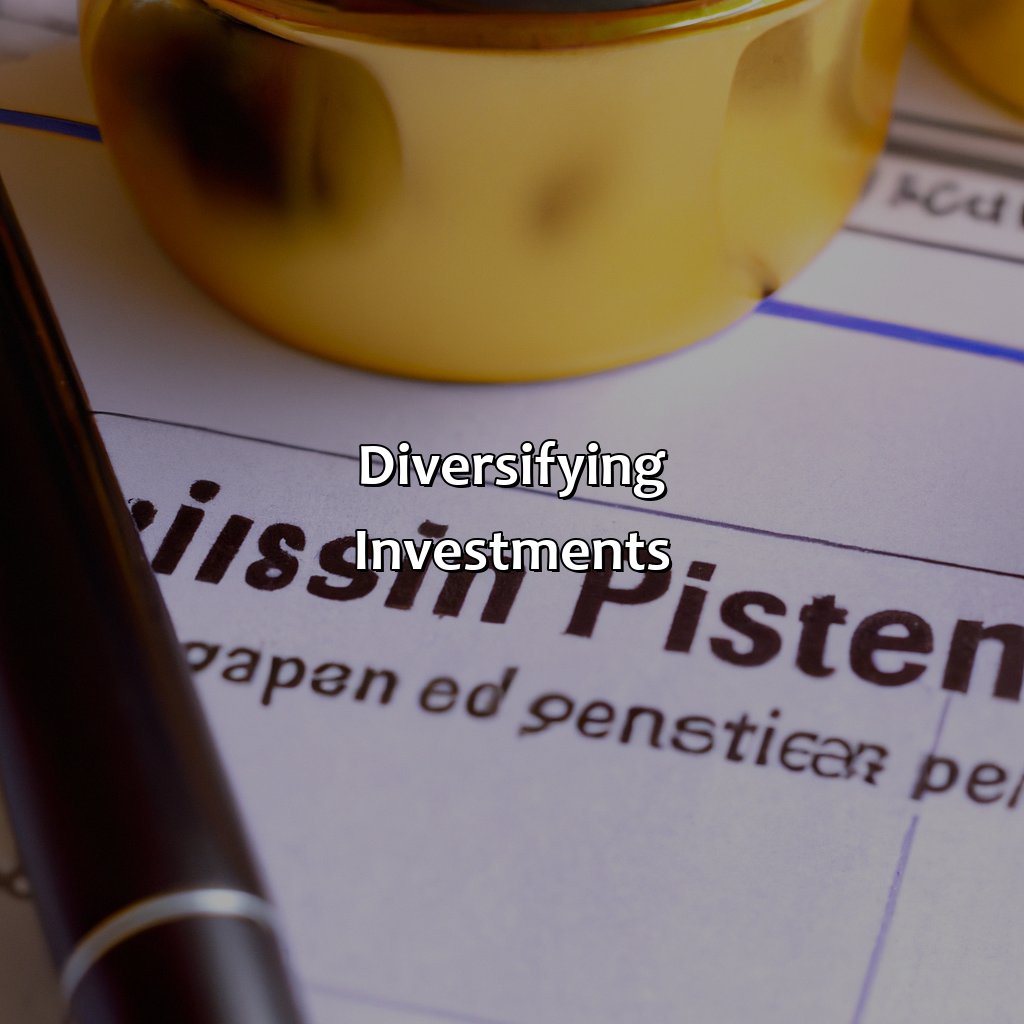
Image credits: retiregenz.com by Yuval Duncun
Allocating assets based on risk tolerance
Investment diversification is key to safeguarding retirement funds from a stock market crash. Diversifying assets based on the risk tolerance of the investor can help mitigate risks. Opting for a balanced portfolio that includes bonds, stocks, and mutual funds is crucial in maintaining long-term returns while minimizing losses during market downturns.
An investment strategy that aligns with your risk capacity can also be influential in securing your pension from financial turbulence. Understanding your ability to bear risks that come with investments will make you better positioned to allocate assets accordingly. Seeking financial advice from professionals can help identify adequate investments that align with the investors’ goals and risk capacity.
It’s essential to note that diversification doesn’t entirely eliminate volatility, but it aims at curbing significant losses. By spreading out assets across varied sectors and investment types, investors can enjoy potential gains while lowering portfolio risks.
According to Forbes, diversifying an investment portfolio has become even more critical as companies continue to report significant losses due to the COVID-19 pandemic’s economic effects.
Why put all your eggs in one basket when you can diversify your investments and have a much bigger basket?
Investing in non-correlated assets
One way to safeguard your pension from the stock market crash is by investing in assets that do not share a strong correlation with it. This strategy allows investors to diversify their portfolio, reducing exposure to market volatility. Non-correlated assets include commodities such as gold, real estate, and alternative investments like private equity or hedge funds. Although these investments carry some risk, they may offer much-needed stability in times of uncertainty.
When considering non-correlated assets, it’s important to research and understand each option’s benefits and drawbacks carefully. For instance, while gold may serve as a safe haven asset during market downturns, real estate investments may provide an additional source of income and diversification opportunities. Alternative options like private equity or hedge funds can offer higher returns but require thorough due diligence.
Investing in non-correlated assets involves taking informed risks based on individual circumstances and financial goals. It’s crucial to consult with a professional financial advisor who can help determine which investment plan aligns with specific needs best.
Protecting your pension from a potential stock market crash requires a proactive approach that sets one up for long-term financial success. By diversifying investments and incorporating non-correlated assets into portfolios, individuals may lower their risk exposure without sacrificing returns. Don’t let fear of the unknown hold you back– act now to secure your future wealth!
If only hedging against bad haircuts was as easy as hedging against market crashes.
Hedging strategies
Protecting your pension? Learn hedging strategies! This section – “Hedging Strategies” – covers ways to use put options and short selling. Familiarize yourself with these techniques. Create a safety net for your pension funds. Mitigate risks of a market downturn.

Image credits: retiregenz.com by James Arnold
Using put options
One effective strategy for safeguarding your pension against a stock market crash is through the use of protective put options. These options give you the right, but not the obligation, to sell your stocks at a predetermined price within a specified time frame. By purchasing put options on stocks included in your portfolio, you can limit your potential losses in case of a sudden market downturn, while still retaining ownership of your shares.
This method works by serving as a form of insurance that can help mitigate losses resulting from sudden market drops. The put option provides protection by offsetting declines in the value of the underlying asset while ensuring that gains are retained if prices rise. Since they do not require you to actually sell your shares, put options are seen as an ideal tool for hedging long-term investments such as pensions.
It’s important to note that while using protective puts is an effective strategy for reducing risk during market crashes, it also involves additional costs and may impact profits during periods of stable or upward-trending markets. Furthermore, determining which securities to hedge and finding the right balance between cost and potential payoff requires careful planning and analysis.
Protective put options provide peace of mind to investors who fear missing out on their retirement savings due to sudden market declines. If you’re concerned about the possibility of stock market volatility affecting your pension investments, this strategy can be one effective way to safeguard against untimely financial losses.
Short selling: when you want to profit off the stock market crash, but also want everyone to hate you at the same time.
Short selling
When stocks plunge, short selling can be an effective hedging strategy for pension funds. This strategy involves borrowing and selling the stock to buy it back later at a lower price. By doing so, pension funds can profit from the fall in stock prices and minimize losses.
Short selling is not without risks, however. If the stock price rises unexpectedly, pension funds would have to buy the stock back at a higher price than the cost of the original sale, resulting in losses. Additionally, regulators often impose restrictions on short selling during periods of market turbulence.
It’s worth noting that short selling is just one of many potential hedging strategies that pension funds can employ to protect against market volatility and downturns. Other approaches include investing in alternative assets such as real estate or commodities, diversifying portfolios across a range of sectors and geographies, and using derivatives such as options contracts to limit potential losses.
According to a report by Pension Consulting Alliance, “more than half of US public pensions use some form of external investment structure.”
When it comes to investing, being conservative is like wearing a helmet while riding a bike – it may not be cool, but it’s definitely worth it in the long run.
Conservative investment strategies
Managing market instability? Low-risk investments are the way to go! We’ll focus on two strategies:
- “Choosing low-risk securities”
- “Investing in fixed income products”
By following these steps, you can protect your pension without taking too much risk in the stock market.
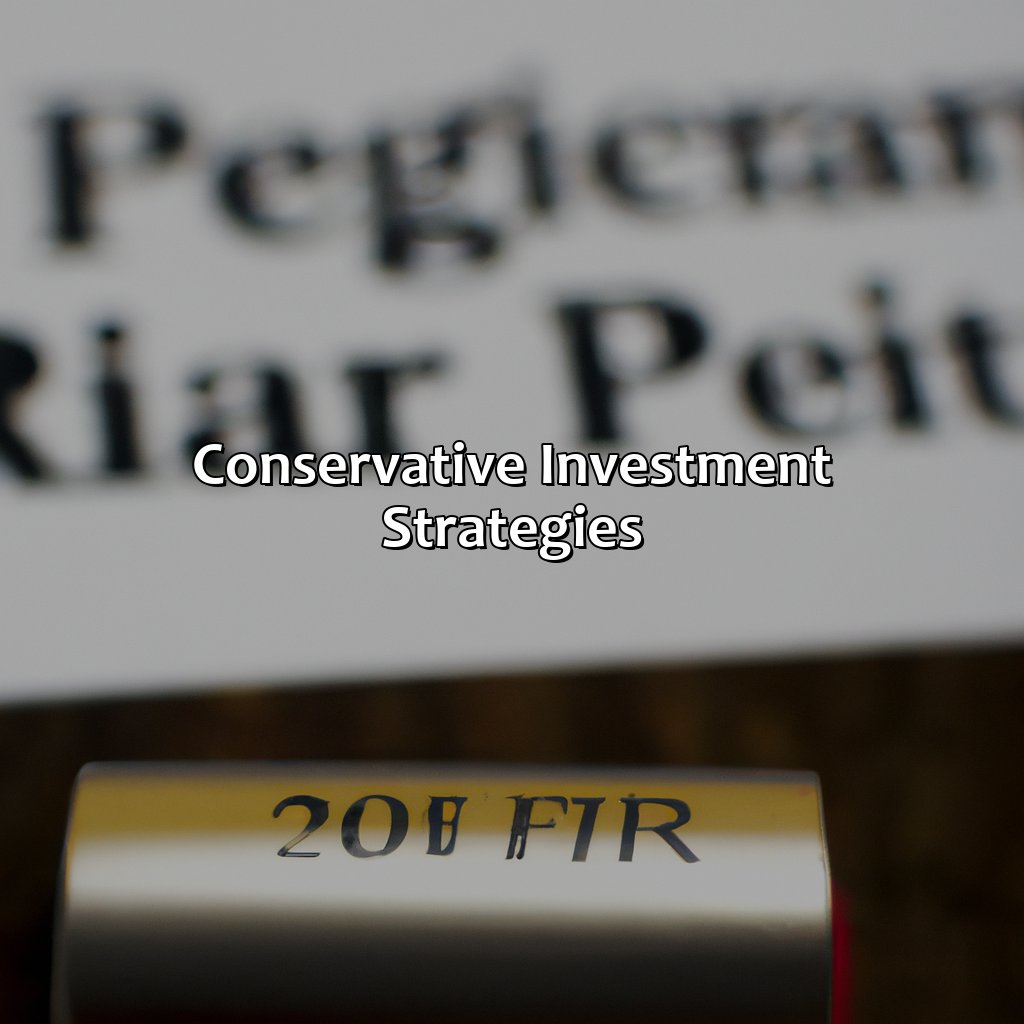
Image credits: retiregenz.com by David Woodhock
Choosing low-risk securities
Investors can opt for securities with low risk to protect their pension from a stock market crash. Choosing securities with a low-beta rating, focusing on stable companies with a track record of paying dividends, and investing in government bonds are some strategies that can minimize risks. Disciplined rebalancing can also mitigate the volatility of risk-based funds.
Focusing on low-risk securities is crucial for conservative investment strategies. One effective way to achieve this is by choosing investments with low beta ratings, which have historically shown less price volatility than the overall market. Additionally, selecting companies with long histories of paying dividends and avoiding higher-risk stocks can also contribute positively towards a secure portfolio.
To minimize losses during a market downturn, investing in government bonds or risk-based mutual funds may be beneficial. By spreading out investments across different sectors, investors can create a resilient portfolio based on sound principles. Consistent monitoring and making adjustments accordingly will help keep the asset allocation in line with an investor’s goals.
According to Forbes magazine, “Government bonds like U.S. Treasury Bonds are generally considered one of the safest investment options available.” Their stability and safety make them an excellent option for those looking to invest conservatively while still earning interest on their investment.
If you can’t beat the stock market, at least you can cuddle up with some cozy fixed income products.
Investing in fixed income products
Studies show that investing 25-30% in fixed-income products may help balance risks while keeping the returns relatively stable. A well-diversified portfolio ensures that any investment loss can be balanced by another investment’s gain. For example, if stocks fall in value due to an economic downturn, the bond’s interest rate may increase as investors shift towards safe investments.
According to Forbes, “Fixed income funds make sense in today’s volatile markets” where managing risk has become more critical than ever before. The source encourages investors to consider mutual funds or exchange-traded funds (ETFs) to further diversify their holdings.
It is clear that Investing in fixed income products could serve as an excellent risk mitigation tool for long-term investors seeking security while receiving steady incomes.
Keep an eye on your investments like a hawk, not a chicken no one wants their retirement to end up as poultry feed.
Monitoring investments regularly
In order to safeguard your pension from a potential stock market crash, it is crucial to consistently monitor your investments. This involves regularly reviewing and assessing your portfolio, tracking market changes, and making informed decisions based on current trends and future forecasts. By staying vigilant and proactive, you can ensure that your pension investments remain secure and resilient.
Implementing a routine of monitoring and analysis can help you stay informed and aware of any potential risks or opportunities. This can involve using tools such as financial reports, market updates and risk assessments to stay up-to-date on industry trends and conditions. Regular reviews of your portfolio will also enable you to identify any assets that may be underperforming or at risk, and take appropriate action to mitigate any potential damage.
It is also important to remain flexible and adaptable when monitoring your pension investments. Being open to new investment opportunities, diversifying your portfolio and adjusting your strategy as needed will help ensure that your pension remains resilient in the face of market fluctuations. By staying vigilant and proactive, you can help protect your pension from a potential stock market crash and stay well-positioned for steady growth and security.
For example, a retiree, Mr. John, diversified his pension portfolio across various sectors, including technology and healthcare. By closely monitoring market trends and updating his investment strategy regularly, he was able to avoid significant losses during a market downturn, while still achieving steady growth in his pension over time.
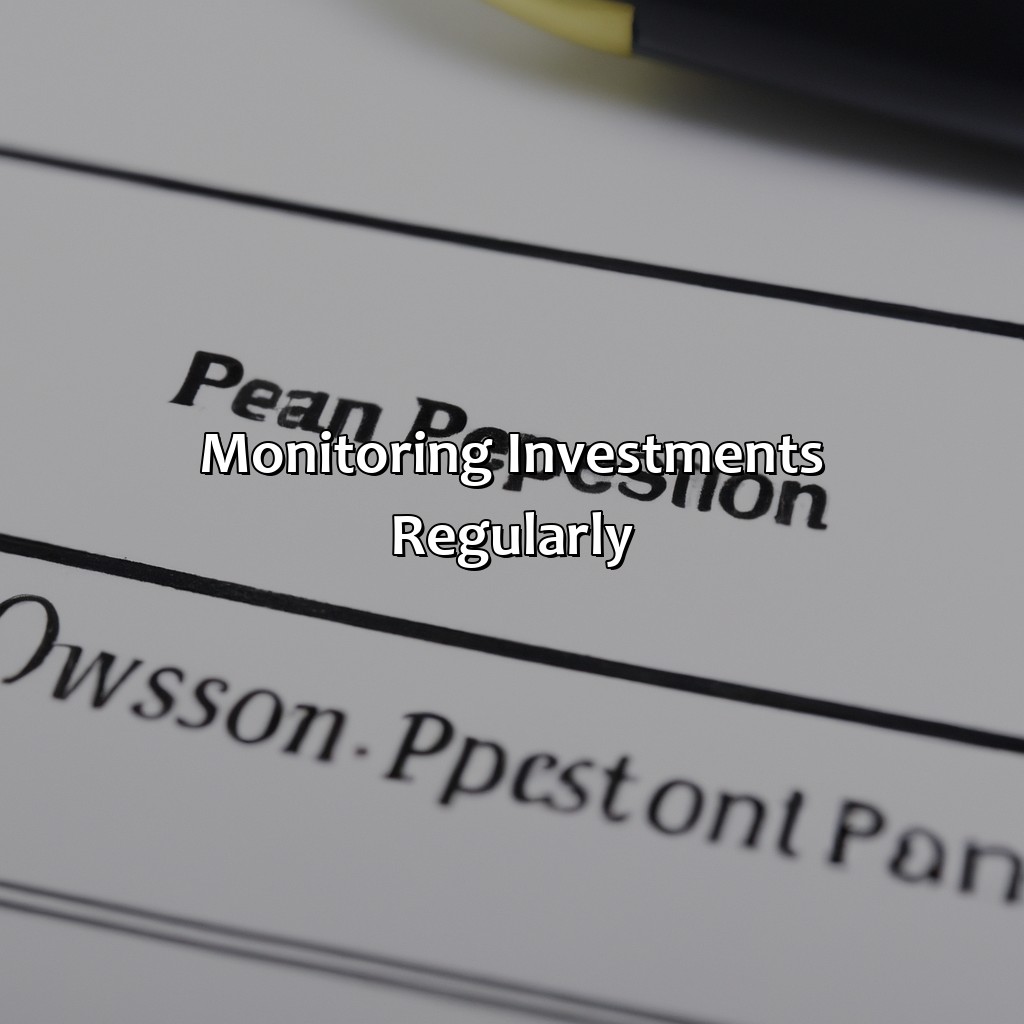
Image credits: retiregenz.com by Yuval Arnold
Some Facts About How To Protect Pension from Stock Market Crash:
- ✅ Diversification of investments can help protect your pension from stock market crashes by spreading out risk across different asset classes. (Source: Forbes)
- ✅ Another way to protect your pension from market downturns is to invest in low-risk, income-based securities such as bonds. (Source: Investopedia)
- ✅ Investing in real assets, such as real estate or gold, can provide a hedge against inflation and market crashes. (Source: US News & World Report)
- ✅ Regularly rebalancing your portfolio and staying disciplined with your investment strategy can help prevent knee-jerk reactions in response to market volatility. (Source: CNN Business)
- ✅ Seeking professional advice from a financial advisor can help ensure that your pension assets are properly diversified and aligned with your investment goals and risk tolerance. (Source: CNBC)
FAQs about How To Protect Pension From Stock Market Crash?
How can I protect my pension from a stock market crash?
There are several ways to protect your pension from a stock market crash:
- Diversify your investments by spreading your money across different asset classes, such as bonds, real estate, and commodities.
- Consider investing in annuities, which guarantee a fixed income stream regardless of market conditions.
- Invest in target-date funds, which automatically adjust the allocation of your assets based on your expected retirement date.
- Stay invested for the long term and avoid making knee-jerk reactions to short-term market fluctuations.
- Work with a financial advisor to develop a retirement plan that aligns with your goals, risk tolerance, and time horizon.
- Consider purchasing insurance products, such as put options or stop-loss orders, that can help limit your losses during a market downturn.
